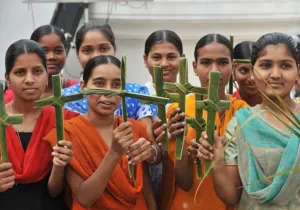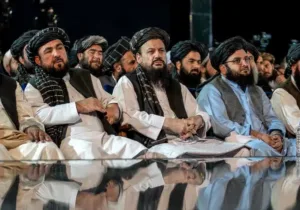Last spring, in the 53rd minute of a hotly contested soccer match between two of the most famous soccer clubs in the world, something extraordinary happened. In the heated game between Liverpool and Chelsea, out of nowhere, Mohammed Salah expertly controlled a 40-yard pass on one foot, skipped passed his defender and unleashed a 25-yard howitzer of a shot into the top corner of the goal. The stadium erupted, fans across Europe, Asia, and the Americas celebrated in bars, living rooms, and cramped transit terminals.
Even more notable is what took place after the team celebration. Salah bowed his head to the floor, publicly prayed in an easterly direction. The icon of one of England’s cultural institutions was explicitly exercising his religious freedom. Salah’s public display of the Muslim faith occurred in a country where British members of the European parliament have regularly disparaged Islam. Both home and away fans across Europe regularly show tolerance, to not only Egyptians but all Muslim players who choose to celebrate in this fashion. However, in Egypt, in Muslim majority Egyptian leagues, the experience is quite different. Rather than tolerance, Muslim majority crowds and officials subject minority Coptic players to systemic suppression and intolerance at every level of their careers.
That Coptic players are kept out of the Egyptian National team is indicative of a more pervasive cultural problem faced by religious minorities in Egypt. Copts make up 10% of the Egyptian population, yet somehow over the last 50 years, only two of them have made appearances for Egypt at the international level or in domestic. Officially, the Egyptian Football Federation states that they never inquire about the religion of their players; but that fails to account for the fact that a player’s given name alone can indicate whether they are Christian or Muslim.
A prime example of this prejudice in action can be found in the case of Mina Bendary. During his youth soccer career, he progressed to the reserves of Al Ittihad, an Alexandria based team in the Egyptian Premier League. However, once they discovered his Coptic first name, he was told by club officials that he must change his name to play professionally. Former national team hero, Mido, who plied his trade in the English Premier League after various stints across Europe and Egypt, admits that systemic issues exist and profoundly affect the talent pipeline. Saying “How is it possible that in the history of Egyptian football, there have only been five Christian players at the top level? Some Christian players stop playing at a young age because of the discrimination by some of the coaches.”
Prejudice against minority groups rarely stays confined to one area of culture. If discrimination is affecting a tertiary area of Egyptian society like sports, then one can assume that other areas of society are not immune from the same prejudice. In this case, let’s call it a “trickle-up” effect. Finding discrimination in soccer leads us to ask other questions about Egyptian society, such as: How many Coptic persons are on the city councils of Cairo and Alexandria? Who decides how to allocate funds to different neighborhoods where Coptic people may or may not be concentrated? How is school funding and curriculum, allocated? How are Coptic contributions to society being ignored in primary education? These are serious issues that could have both: a long-term effect on Egypt’s ability to accurately record history and the world’s ability to understand the contribution of the Coptic people to Egyptian and regional culture.
We have seen this narrative play out before, in France in the 90s. In 1998, French National Team Head Coach, Aime Jacques fielded a team heavily laden with players of African and Caribbean descent. For the very first time, there was a French national team that appeared less European in origin. The 23-man French squad consisted of ten first-generation or immigrant players. In addition, of the 14 players that represented France in the championship match, ten were of minority descent. The French public was outraged. However, after the 1998 World Cup, which France both hosted and won, these outcasts became French heroes. The symbol of the tournament was French midfielder, Zinedine Zidane, the child of Algerian immigrants.
This victory precipitated a shift in French culture and led to much public debate about the plight and the potential of ethnic and religious minorities in France. These public discussions led to the reallocation of billions of Euros directed toward improving infrastructure in housing projects where the marginalized Islamic French minorities had existed since the 1970s and ’80s. One could see a similar future unfolding in Egypt.
Carl Von Clausewitz said, “No two wars are the same.” With this in mind, we should approach the tense state of Coptic-Muslim relations in Egypt with a good bit of pragmatism. The international community should advocate for the integration of religious minority groups into the public spheres of Egyptian society. Such integration is as essential for the economic stability of Egypt as it is for its social health.
In July of 2019, the Pew Research Center held a plenary session on the economic effects of religious freedom and restrictions. Their findings noted that countries, where religious freedom is prominent, tend to be better suited for both sustaining businesses, and emerging commerce. Egypt, with all of its economic potential, stands poised to benefit from the fruits of increased religious freedom. It’s time for Egypt to trickle up, not down.






 Sponsor a student for Christianity & National Security 2024
Sponsor a student for Christianity & National Security 2024